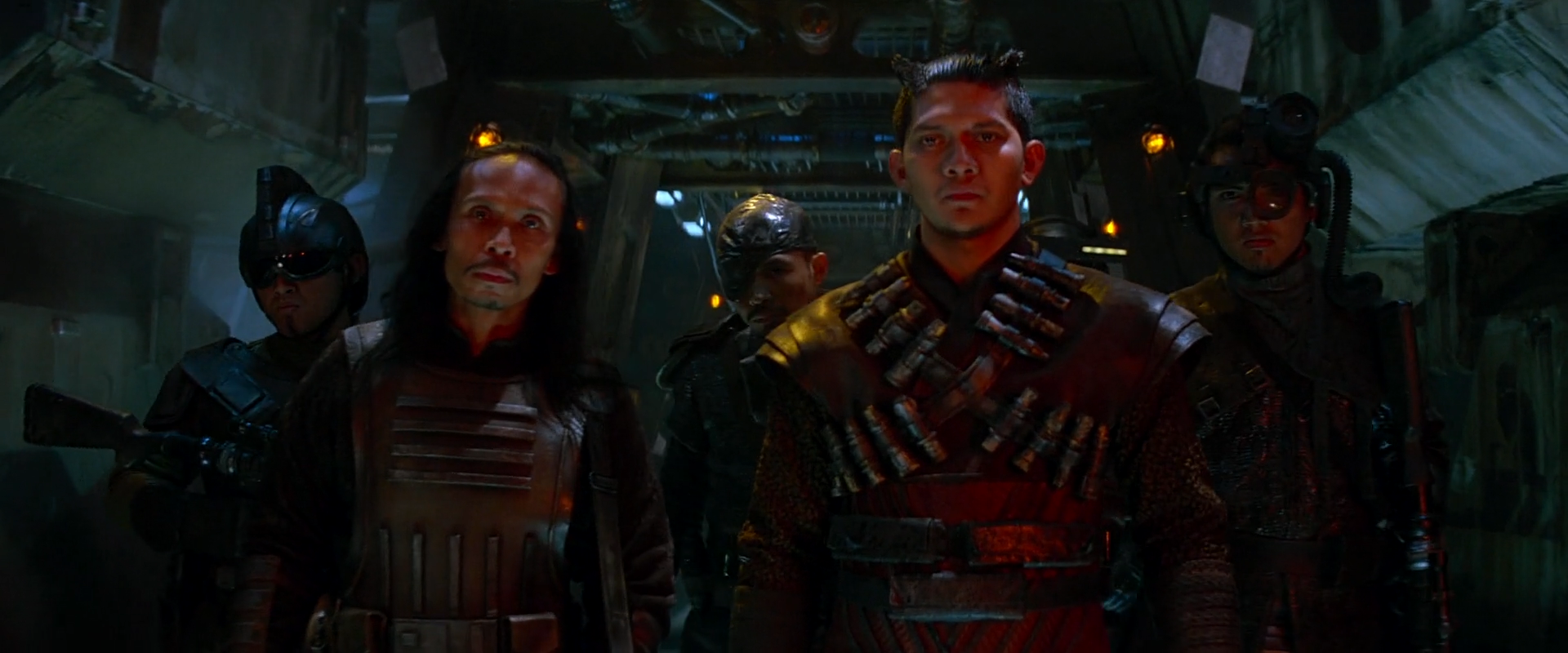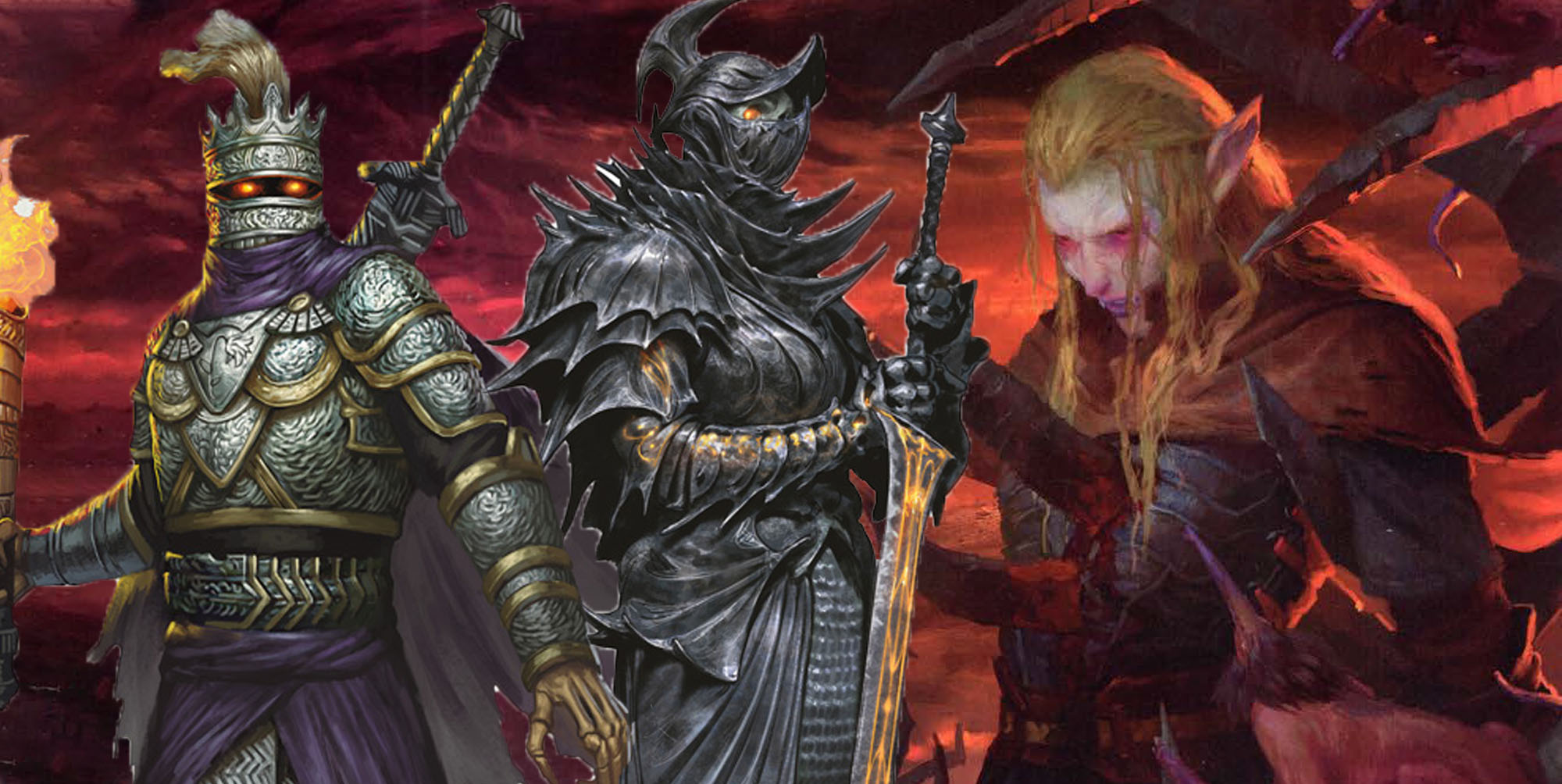Think back over all the roleplaying games you’ve played and run.
Why do NPCs always fight to the death?
If you take a moment to really think about it, this is odd behavior. Even in actual warfare, the outcome of a conflict is rarely for one side to fanatically fight to the last man. Animals don’t do this, either. When the tide of battle has clearly turned, armies rout and people run away or surrender rather than being slaughtered.
Yet in most RPGs, every fight ends only when every last person on one side has been laid in the grave.
First, there used to be morale rules. But GMs (and the industry in general) moved away from morale rules because of the “roll vs. role” mentality which, in part, maintained that mechanics shouldn’t govern character interactions. Thus, the NPCs’ decision of whether to run away or stay and fight became solely the GM’s purview.
(The other reason GMs abandoned morale rules is because they mechanically prompt all of the following stuff.)
Second, most GMs start by running dungeons. Dungeons are an appealing scenario structure, particularly for new GMs, because each room is firewalled from other rooms, making them easy to prep and easy to run. You don’t have to worry about the whole scenario, just the current room.
NPCs who run away break the firewall.
Where are they running to? What are they going to do there? If they’re looking for help or trying to summon reinforcements, where are the other enemies located? If they reach those enemies, what do those enemies do?
To handle willy-nilly monsters cascading through your dungeon like free radicals, you need advanced techniques like adversary rosters, and most GMs don’t have those techniques.
(Conversely, if you’re using the My Perfect Encounter™ school of adventure design where every encounter is hard-coded to a specific location and fine-tuned to a razor’s edge of challenge, the whole adventure actually falls apart if monsters from one encounter start running around the place. This becomes even more true in a game like 4th Edition D&D, where this is hard-coded into the system.)
Third, taking monsters prisoner ALSO breaks the firewall, because the PCs are going to want to question them about the dungeon. This, again, requires the GM to break out of the current room and think about the entire dungeon as a whole. (Which, again, is more difficult for a new GM.)
Prisoners also create a logistical challenge which is perhaps interesting once or twice, but then quickly becomes boring.
Fourth, the desire to avoid boring logistics will prompt players to solve the problem by murdering their prisoners. This is morally repugnant and, therefore, often undesirable. Similar calculations will also motivate the PCs to shoot anyone running away in the back (which may also be aesthetically/ethically undesirable).
For a non-RPG example of the difficulty in taking prisoners, check out The Raid (2011). The main characters try to take prisoners, but the logistics overwhelm them and a lot of people get killed.
Once you move away from raid-type scenarios (which a typical dungeoncrawl is closely related to), bad guys running away are usually easier to handle. (If nothing else, they can just run off into the night and exit the scenario.) And the prisoner logistics, along with the tough choices accompanying them, usually become more interesting to explore.
But by that point, most GMs have already developed “fight to the death” as a habitual practice, so it tends to just kind of stick around.
Fifth, there’s also the influence of video games. The designers of video games face similar challenges in implementing bad guys who run away and so they also don’t do that, creating a cultural perception of what game-ified violence looks like which GMs carry into their tabletop games.
TO THE DEATH!
On the flip-side, very few systems provide a viable system by which PCs can reliably flee combat. (Ironically, the original 1974 edition of D&D is one of the rare exceptions.)
Mechanically, this strongly incentivizes the PCs to also fight to the bitter end, because the alternative systemically boils down to begging the GM not to kill you: Players like to feel as if they’re in control of their own destiny, and staying within the clear structure of the combat system lets them do that.
(An effective mechanical structure for retreat must (a) be known to the players; (b) have a concrete resolution method which clearly sets stakes and provides an unambiguous and definitive outcome; (c) allow players to make meaningful choices which have a substantive impact on the success or failure of their retreat (and are, ideally, shaped by the specific of their current situation and/or resources); and (d) resolve success or failure for the group as a whole (players don’t want to risk leaving one of their own behind, and such systems generally suffer from a rolling to failure problems in any case). But I digress.)
This whole meme-sphere – in which both PCs and NPCs fight to the death – then feed back into game design and scenario design, which, for example, balances combat encounters around the assumption that the bad guys are going to fight to the bitter end.
GMs who try to break away from that assumption will find that the result is systemically unsatisfying: The PCs don’t really feel challenged when the bad guys logically run for it, which leads to everything feeling like a cake-walk in which the last few rounds are just mopping up bad guys who aren’t even fighting back.
No challenge? No satisfying conclusion?
That’s a bad encounter.
Which, of course, encourages the GM to abandon the whole “running away” thing, leaving the bad guys engaged until the bitter (yet mechanically satisfying) end.
SO WHAT?
If having the PCs and NPCs fight to the bitter end is so much easier, what’s the problem? Why not just keep doing that?
Well, as you’ve probably already noticed in our discussion so far, it takes a lot of interesting situations off the table. The Matrix probably wouldn’t be improved with Neo needing to figure out how to manage a captured Agent, for example, but Pitch Black demonstrates the unique challenges and amazing roleplaying that can emerge from shepherding even a single prisoner.
Another prominent example are the Principles of RPG Villainy: Running away to fight another day isn’t just something bad guys logically do, it’s the process by which truly memorable, campaign-defining villains are created.
I’ve already mentioned adversary rosters as a tool for running strategically active environments, but if every encounter mindlessly defaults to the NPCs fighting to the death, this tends to stunt the development of these more complex styles of play.
And, of course, none of this is to say that NPCs should never fight to the death. But variety is the spice of life. (Or, I guess, the spice of death, in this case.)
So what’s the alternative?
Well, obviously, you can just start making different choices.
But, as we’ve noted, there are systemic factors that affect these choices. We’ve already talked about how you might implement a mechanical structure for retreating, but there are other options to explore.
First, revisit how you design and think about encounters. My opinion is that the My Perfect Encounter™ method of adventure design is a hyper-developed dead end. It takes the training wheels that are useful for first time GMs and quadruples down on them, trying to make them the best goddamned training wheels you’ve ever seen. But you don’t get better at riding a bike by strapping on a fourth set of training wheels; you get better at riding a bike by taking the training wheels off.
Second, consider implementing a morale system. A good morale system won’t just mechanically prompt you to break your existing habits, it can also provide a structure for players to pursue combat tactics other than “stab them to death.” In other words, finding ways to rout your opponents is a viable way of achieving your tactical goals.
Third, speaking of tactical goals other than crushing your enemies (for example, you might also drive them before you and hear the lamentations of their women), another option is to define 0 hit points to mean something other than death. And I don’t just mean unconsciousness. I mentioned how “balanced encounters” in an RPG are designed around enemies fighting to the death. But it would be more accurate to say that they’re designed around enemies fighting until they run out of hit points. If we define that as death, then they fight to the death.
But if we broaden that definition so that your foe(s) being reduced to zero hit points simply means “the fight is over,” then we open up the possibility for fights to end in other ways. Depending on genre and circumstance, for example, this could be explicitly framed as anything from “they run away” to “they agree to join you in your quest” to “they surrender the golden phoenix of Shar-Halad.”














